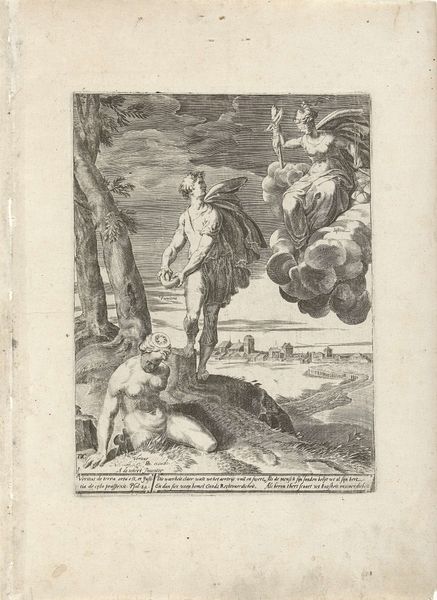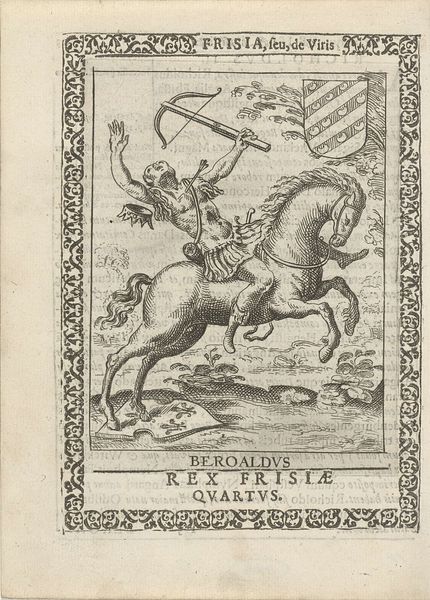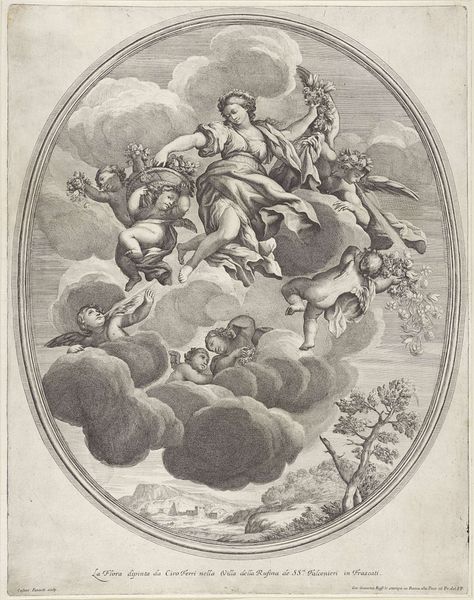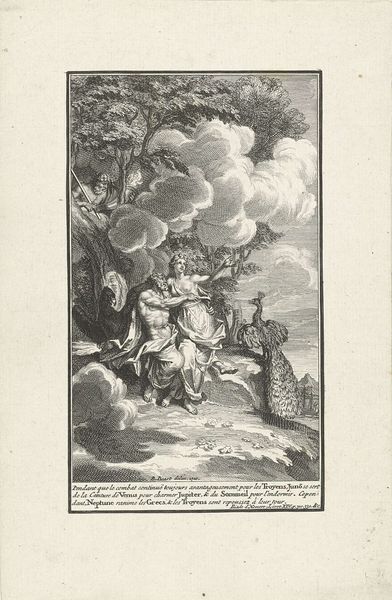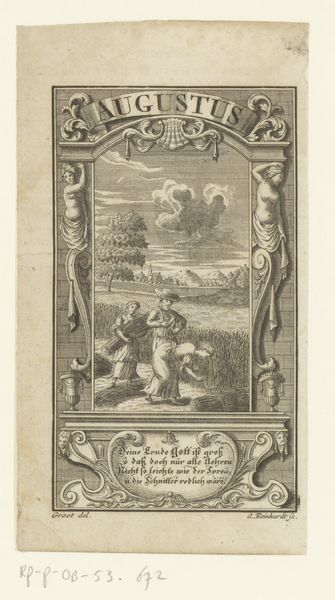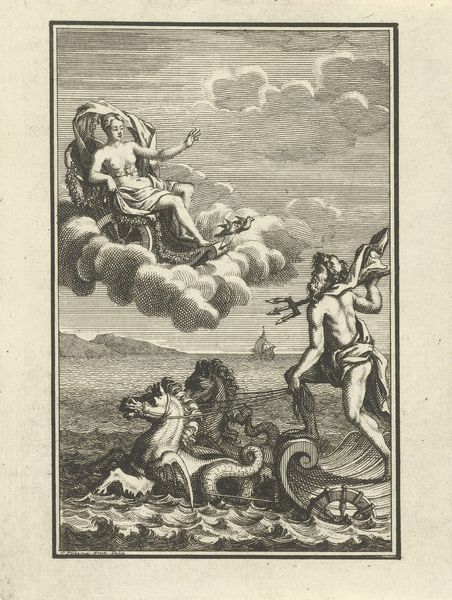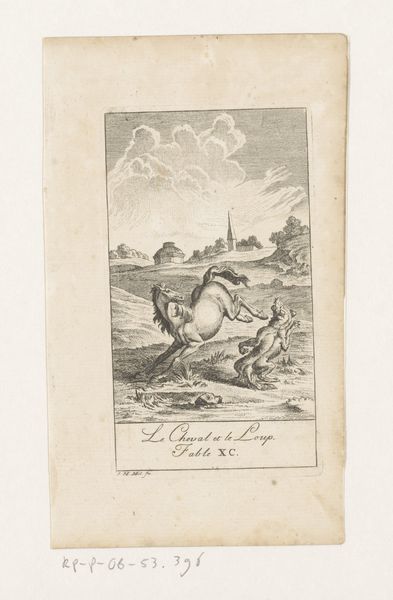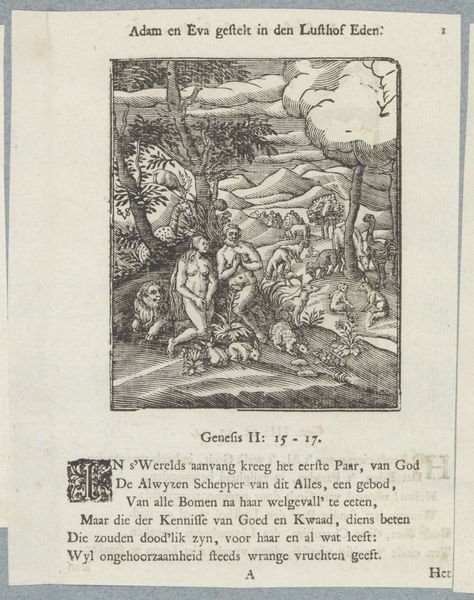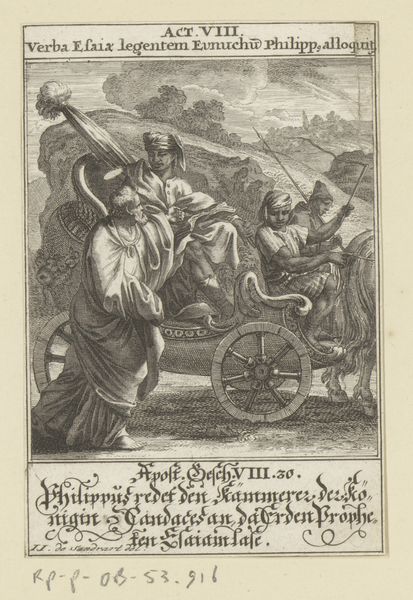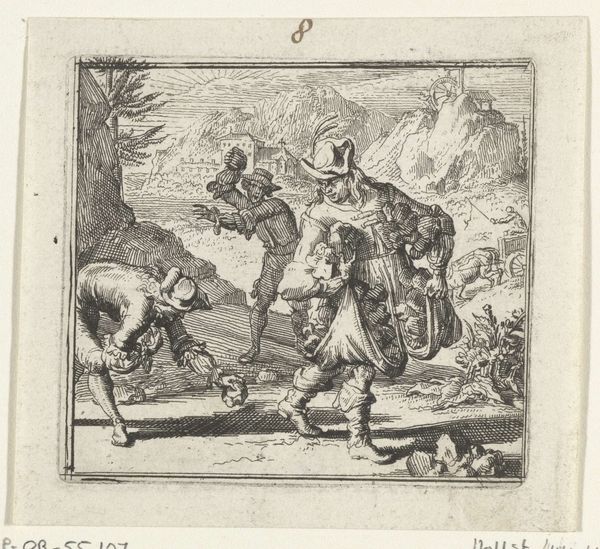
print, engraving
#
baroque
# print
#
old engraving style
#
landscape
#
figuration
#
history-painting
#
engraving
Dimensions: height 84 mm, width 66 mm
Copyright: Rijks Museum: Open Domain
Curator: This engraving from 1672 by Albert Flamen depicts Apollo in his chariot, soaring above the landscape. There is so much cultural baggage attached to the imagery. Editor: The energy is striking. Look at the swirling clouds, the dynamic lines etched to convey movement. The whole composition is built on this diagonal upward thrust. It feels really powerful, even uplifting. Curator: Absolutely. This piece isn't just a standalone image. Flamen, though a landscape artist by trade, was very skilled in the Baroque style, capturing the intensity often favored by aristocracy at that time. You see Apollo, bathed in sunlight, an unequivocal symbol of absolute power, intellect and divine right, being conducted to rule the sky above all elements of nature and civilization. It serves to illustrate the divine mandate and exceptional talents of kings and rulers. Editor: So it’s functioning as visual rhetoric? A kind of idealised representation of power. The engraver has prioritised line over tone to direct the viewer's eye, to really dramatise Apollo's dominance of the sky. Curator: Precisely, notice also how the landscape seems to yield to him. Everything below, the trees, the suggestion of buildings, it's all smaller, less distinct. He dictates how those elements in his domain should behave, both visually and ideologically. It can even reflect similar dynamics here on earth at the time this was printed. Editor: And it’s really skillfully done. The handling of the engraved line to create a sense of texture, especially in the horse's mane, is particularly successful. It is almost possible to hear the thunder of hooves. Curator: But it is also worth considering the intended audience, and who would be in the position to view such images and consider what implications this all had. These prints played a crucial role in reinforcing and disseminating political ideology at the time. Editor: Thinking about how an artist used such limited tonal range of black ink to make us feel light and movement really allows you to have a rich appreciation. Curator: By thinking through the historical framework and considering all sides we get such a richer understanding of works like these. It becomes much more than just a stylistic study, which enriches not only the picture but enriches our collective perspectives of that period.
Comments
No comments
Be the first to comment and join the conversation on the ultimate creative platform.
